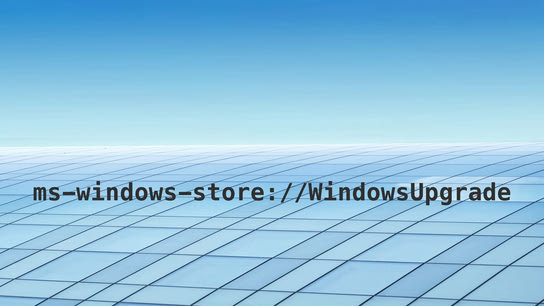It turns out that the one thing that immediately interested my readers in my recent article “How to encrypt backups using Windows 10’s built-in tools” was my use of the undocumented ms-windows-store://windowsupgrade URI. I’m not one to decline an opportunity to geek out about URIs, so here’s everything that I know about it.
This special page was first introduced in Windows 8 where it was used to launch the Windows Store app on the Upgrade to Windows 8.1 page. In Windows 8.1, it was used for 8.1 Home to 8.1 Pro upgrade offer. Since the release of Windows 10, it has been used to upgrade users from all earlier versions of Windows to Windows 10.
On Windows 10 Home and Pro it will launch the app on the Upgrade to Windows 10 Pro page. There isn’t anything on the page for existing Pro users, except for a reiteration of how few additional features loyal Windows customers get with the Windows 10 Pro edition.
This URI isn’t mentioned in any official documentation from Microsoft, including the end-user documentation “Upgrading Windows 10 Home to Windows 10 Pro”. Even though that webpage could have benefitted from the one-click link convenience. Nor is it included in developer oriented documentation like “Launch the Windows Store app”.
I stumbled upon the URI while sifting through Windows libraries in an attempt to link out directly to the Windows 10 Pro upgrade page. It has been mentioned a few times before around the web, but no one seem to have given it much thought.
The special Windows Upgrade page, along with the Settings page (ms-windows-store://settings) and the Downloads page (ms-windows-store://downloadsandupdates) are the only three pages in the Windows Store that are excluded from affiliate revenue sharing through the Microsoft Affiliate Program. Microsoft affiliates can earn commissions “on any sale” in the Windows Store, excluding this one purchase it would seem. I believe there are plenty of application developers out there who’d take advantage of Windows 10 Pro edition only-functionality, and promote Home users to upgrade to Pro if they’d earn a commission doing it.
Microsoft’s own use of the URI seems to be limited to the Windows Activation screen in the Settings app. It only appears there if your copy of Windows hasn’t been activated, is non genuine, or you’re running the Home edition. It’s also used when you click the “Get Windows” or “Reinstall Windows” buttons in the dialogs that harass users who have an expired or invalid Windows license.
I hope this answered everyone’s question regarding this URI. If you’re wondering how I find out about all these weird things in Windows, the answer is that I regularly use FileLocator. It’s a great tool for locating information you didn’t even know was there on your system in the first place.
